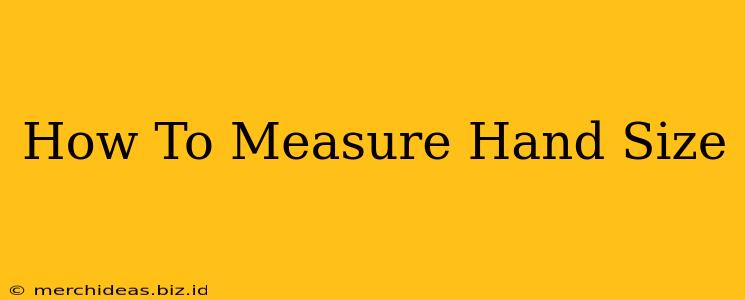Knowing your hand size is crucial for various reasons, from finding the perfect gloves to selecting the right musical instrument. Whether you're a musician, a tailor, a surgeon, or simply curious, accurately measuring your hand size is a straightforward process. This guide will walk you through different methods and considerations to ensure you get the most precise measurement.
Why Measure Your Hand Size?
Accurate hand size measurement is essential in several contexts:
- Finding the Right Gloves: Gloves that are too tight are uncomfortable and restrictive, while those that are too loose offer inadequate protection. Knowing your hand size guarantees a perfect fit.
- Selecting Musical Instruments: Instrument size significantly impacts playability and comfort. For instruments like guitars, violins, and cellos, proper hand size is crucial for optimal performance.
- Medical Purposes: Hand size can be relevant in medical assessments, particularly for evaluating growth and development in children, or for fitting medical devices.
- Tailoring and Garment Fitting: Accurate hand measurements aid in creating custom-made clothing, ensuring a perfect fit and enhancing comfort.
- Ergonomics and Occupational Safety: In certain professions, hand size plays a role in selecting ergonomic tools and equipment to prevent strain and injury.
How to Measure Your Hand Size: Step-by-Step Guide
You'll need a flexible tape measure (a soft fabric one is ideal) and a pen and paper to record your measurements. Here's how to measure:
1. Preparation:
- Hand Position: Keep your hand relaxed and flat on a flat surface. Avoid clenching your fist.
- Which Hand to Measure: Typically, you'll measure your dominant hand, but it's beneficial to measure both for a complete picture.
- Finger Placement: Your fingers should be together but not tightly squeezed.
2. Measuring Hand Length:
- Starting Point: Place the end of the tape measure at the tip of your longest finger (usually the middle finger).
- Ending Point: Extend the tape measure to the base of your palm, where your hand meets your wrist. This is the crease where your hand bends.
- Recording: Note down the measurement in centimeters or inches.
3. Measuring Hand Width:
- Starting Point: Place the tape measure across the widest part of your palm. This is usually at the base of your fingers.
- Ending Point: Extend the tape measure to the opposite side of your palm, ensuring the tape measure is straight across.
- Recording: Note down this measurement in centimeters or inches.
4. Measuring Finger Lengths (Optional):
For musical instruments or specialized tasks, measuring the length of individual fingers can be beneficial. Follow the same principle as measuring hand length, starting at the tip of each finger and ending at the knuckle joint nearest the palm.
Different Measurement Methods and Considerations
- Circumference Measurement: You can also measure the circumference of your hand at its widest point. Wrap the tape measure around your palm, ensuring it's snug but not tight.
- Using a Ruler: If you don't have a tape measure, you can use a ruler and a pen to mark the measurements. However, this method might be less precise.
- Hand Size Charts: Many online resources provide hand size charts that correlate hand measurements with glove sizes or instrument sizes. These charts can be helpful as a reference.
Troubleshooting Common Issues:
- Inconsistent Measurements: If your measurements are inconsistent, repeat the process several times to obtain an average measurement. Ensure your hand is relaxed and in the same position for each measurement.
- Loose or Tight Tape Measure: Make sure the tape measure is snug but not too tight, to obtain an accurate reading.
- Incorrect Starting/Ending Point: Pay careful attention to where you begin and end your measurements to avoid errors.
By following these steps, you'll be able to accurately measure your hand size, enabling you to make informed decisions on everything from purchasing gloves to choosing the right musical instrument. Remember, precision is key; take your time and double-check your measurements to ensure accuracy.
